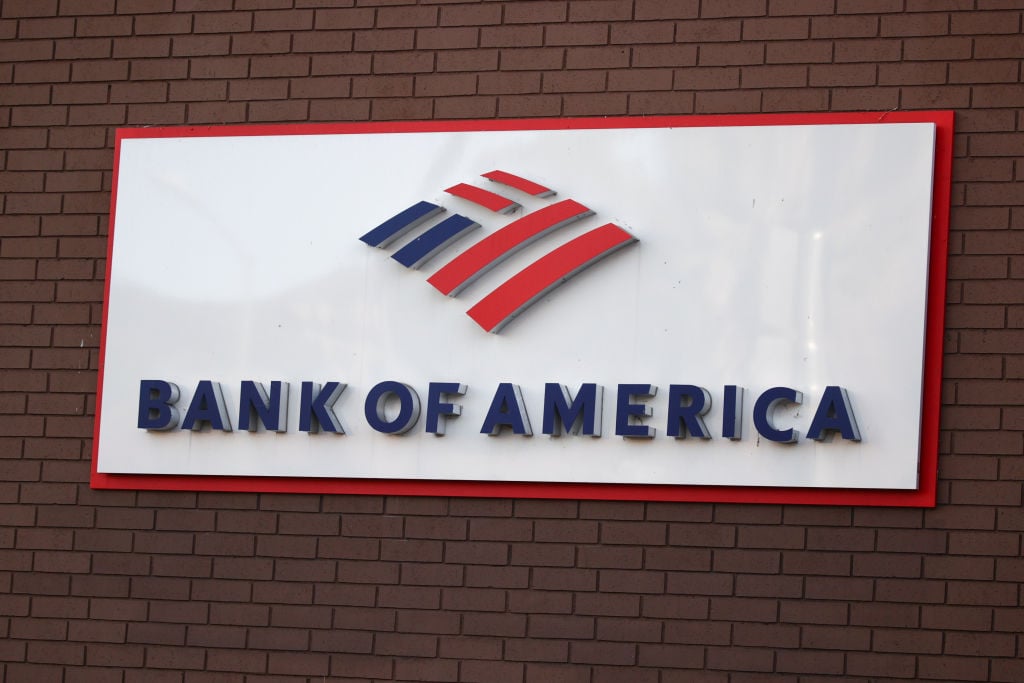After reporting earnings yesterday morning, Bank of America's (NYSE: BAC) headline items sounded tremendous.
- Bank of America swings to a Q3 $5.89 billion profit!
- EPS beats estimates!
- Stock up 10%!
But, as we all should know by now, digging past the superficial numbers in banking makes things complicated. Most of the time analysts estimate a company's earnings before earnings come out. This time, befuddled analysts reported a range for what Bank of America's earnings truly are after earnings came out.
This is due to disagreement over how all the asset sales, accounting complications, and other one-time items should be handled. The consensus earnings estimate beforehand was $0.19. In the confusion after earnings release, the range of what analysts believed true earnings ended up at was between $0.02 and $0.25 (the GAAP figure is $0.56). Then today, I see an adjusted figure of $0.31 on Earnings.com. I don't want to belabor the point, but WOW!
I generally think Citigroup (NYSE: C) has the toughest financials to wade through, but Bank of America is making a big play for the title this quarter. To simplify things, here's the big picture along with the points you should keep in mind.
The big picture
When even a $5 billion investment by Warren Buffett doesn't meaningfully boost your share price, you know you need a big, positive quarter. With all the uncertainty around Bank of America's mortgage business (including its Countrywide acquisition), its much-publicized new $5 monthly fee on debit cards, its prominence in Occupy Wall Street backlash, and its unfortunate targeting as the slowest prey in the herd, Bank of America will take these positive headlines, no matter how qualified and murky.
Here are some of the key details:
- For the bank that has grown voraciously through acquisition over the years, it's a positive sign that Bank of America is no longer the largest bank by assets. JPMorgan Chase (NYSE: JPM) takes over that spot as B of A trims down with an agreement to sell its Canadian consumer credit card portfolio for $8.3 billion and half of its stake in China Construction Bank for $8.6 billion. In addition, it plans to cut over 30,000 positions over the next few years.
- Those one-time items I mentioned earlier include a total of $9.8 billion of pre-tax benefits from two accounting gains and the China Construction Bank sale. They also include a pre-tax loss of $2.2 billion. Included on the benefits side is the effect of the cockamamie accounting rule that provides a gain to banks whose debt is discounted by the market. The thinking is that if their debt is cheaper, the bank could theoretically buy it up for a profit. Of course, if they had that kind of money, their debt wouldn't be discounted in the first place. You're starting to understand why analysts can differ on "true earnings."
- Operationally, Bank of America saw some relief from mortgage and credit-loss provisioning and expenses, but weakness in its lending and investment banking businesses. Like the banking sector as a whole, Bank of America could face declining interest margins as the Fed's Operation Twist looks to tighten the spread between short-term and long-term interest rates. Any loan weakness in Bank of America outside of downsizing activities is potentially troubling in light of some strength shown at competitors, including Wells Fargo (NYSE: WFC), JPMorgan, and Citi. On the investment-banking side, it was a rough quarter for deal activity, and Bank of America had less than a third of the trading revenue of JPMorgan and Goldman Sachs (NYSE: GS), and less than half the trading revenue of Citi and Morgan Stanley (NYSE: MS).
Bank of America's bottom line
Let's put this quarter in context. Operationally there were headwinds this quarter, but operations aren't what have shares trading for a third of book value. For Bank of America to provide shareholders with value, we need to see Bank of America shore up its balance sheet, move toward resolving litigation, and do a better job of public relations around its moves. I mention the latter item because it's very dangerous to be on the radar of the public and regulators. Ask Lehman Brothers.
All that said, I continue to think Bank of America could be good buy here for investors with very high risk tolerances. But as you can see with this quarter's earnings release, much of the investment will have to be on faith.








